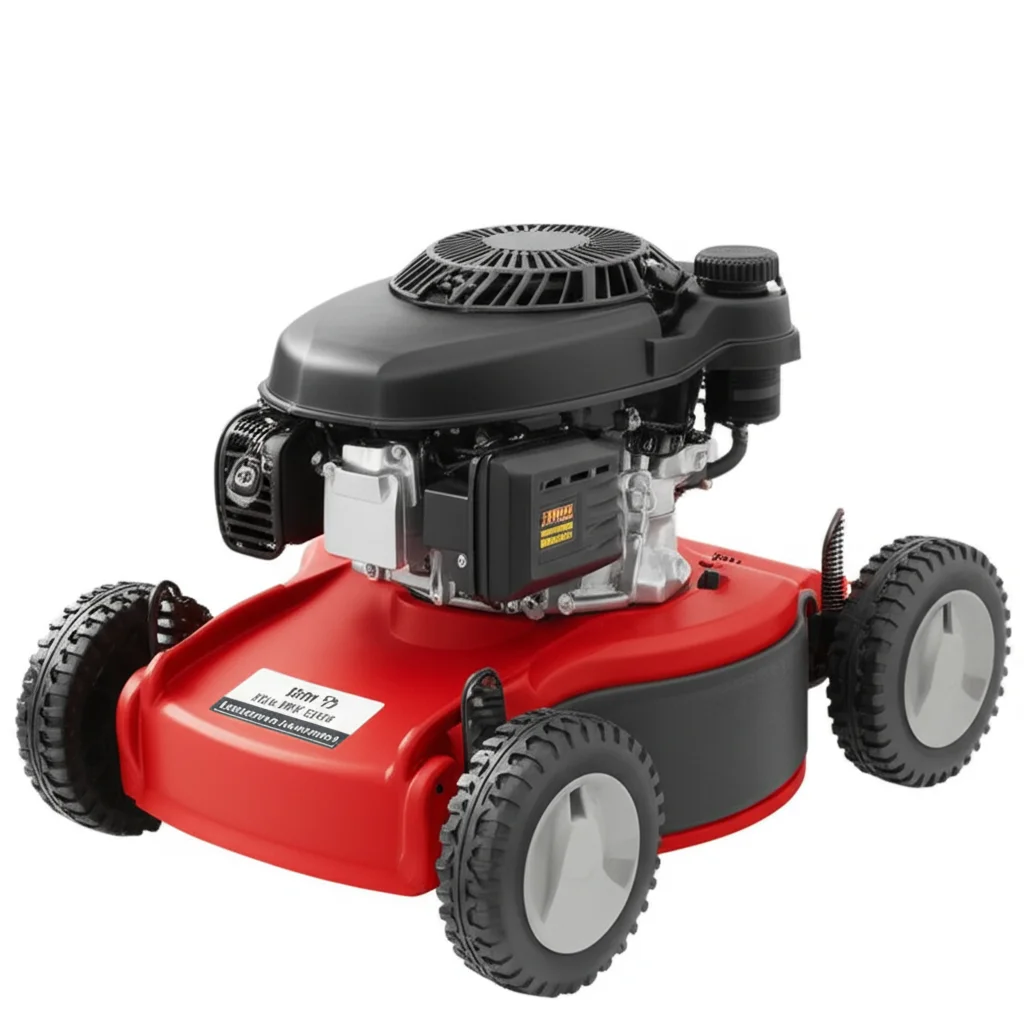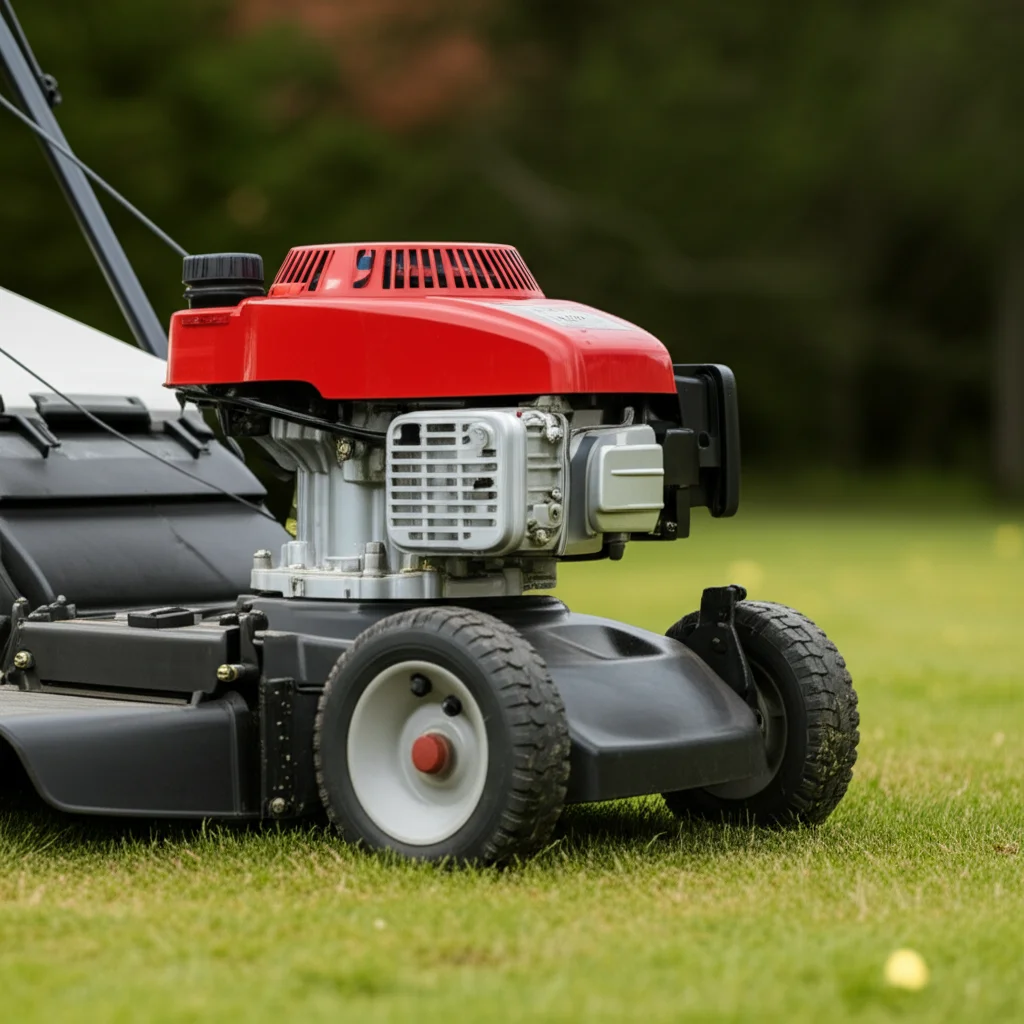· Lawn Mower Maintenance · 5 min read
How To Clean A Troy Bilt Lawnmower Carburetor

Revive Your Ride: How To Clean A Troy-Bilt Lawnmower Carburetor
Is your Troy-Bilt lawnmower giving you trouble? A common culprit for a struggling engine is a dirty carburetor. This guide will walk you through how to clean a Troy-Bilt lawnmower carburetor, restoring its performance and getting you back to yard work. We’ll cover everything from identifying the problem to reassembling the carburetor, ensuring a smooth and efficient cut. This article will provide a step-by-step process to tackle this common lawnmower issue.
Takeaway:
- A clogged carburetor prevents proper fuel mixture.
- Cleaning involves disassembly, soaking, and blowing out passages.
- Proper reassembly is crucial for optimal performance.
Quick Answer: Cleaning a Troy-Bilt lawnmower carburetor involves removing it, disassembling it, cleaning each part with carburetor cleaner, and reassembling it carefully. This process restores proper fuel flow and engine performance.
Understanding Your Troy-Bilt Carburetor
Before diving in, it’s helpful to understand what the carburetor does. The carburetor mixes air and fuel to create the combustion needed to power your Troy-Bilt lawnmower. Over time, fuel can leave behind deposits and varnish, clogging the small passages within the carburetor. This restricts fuel flow, leading to starting problems, rough idling, and reduced power. If you’re experiencing issues starting your Troy-Bilt, it might be a carburetor issue, so checking it is a good first step. You can also check why my Troy-Bilt lawn-mower won’t start for other potential causes.
Gathering Your Tools and Materials
Having the right tools makes the job much easier. Here’s what you’ll need to clean your Troy-Bilt lawnmower carburetor:
- Wrench set
- Screwdrivers (Phillips and flathead)
- Carburetor cleaner spray
- Small brushes (toothbrush, parts cleaning brush)
- Compressed air
- Clean rags
- Protective gloves and eyewear
- Small containers to hold parts
- Carburetor rebuild kit (optional, but recommended)
A carburetor rebuild kit includes new gaskets and seals, ensuring a tight fit after cleaning. It’s a small investment that can save you headaches later. If you’re unfamiliar with carburetors, consider reviewing a general guide on how to clean a carburetor before starting.
Removing the Carburetor from Your Troy-Bilt
Safety first! Disconnect the spark plug wire before working on your lawnmower. This prevents accidental starting. Next, locate the carburetor, typically near the engine.
- Disconnect the fuel line from the carburetor. Have a rag ready to catch any spilled fuel.
- Detach the throttle and choke linkages. Note their positions for reassembly.
- Remove the carburetor mounting bolts or nuts.
- Carefully remove the carburetor from the engine.
Take pictures during disassembly to help you remember how everything goes back together. This is especially helpful for the linkages.
Disassembling and Cleaning the Carburetor
Now comes the detailed cleaning process. Work in a well-ventilated area and wear gloves and eyewear.
- Carefully disassemble the carburetor, placing parts in separate containers.
- Spray all metal parts with carburetor cleaner. Pay close attention to the jets and passages.
- Use small brushes to scrub away any remaining deposits.
- Use compressed air to blow out all passages and jets. Ensure air flows freely through each opening.
- Inspect the carburetor for any damaged parts. Replace them if necessary, using a carburetor rebuild kit. Sometimes, a simple cleaning isn’t enough, and replacing worn parts is essential. You might also find it helpful to learn how to clean jets on a carburetor for a more thorough cleaning.
Reassembling Your Cleaned Carburetor
With all parts clean and dry, it’s time to reassemble the carburetor.
- Refer to your disassembly pictures or diagrams.
- Reassemble the carburetor in the reverse order of disassembly.
- Install new gaskets and seals from the rebuild kit.
- Ensure all screws are tightened securely, but don’t overtighten.
- Reconnect the throttle and choke linkages.
Double-check all connections before reinstalling the carburetor on your Troy-Bilt. A properly reassembled carburetor is key to a smoothly running engine.
Reinstalling and Testing the Carburetor
Now, reinstall the cleaned carburetor onto your Troy-Bilt lawnmower.
- Reattach the carburetor mounting bolts or nuts.
- Reconnect the fuel line.
- Reconnect the throttle and choke linkages.
- Reconnect the spark plug wire.
Start the lawnmower and observe its performance. It should start easily and run smoothly. If it still runs rough, double-check all connections and consider repeating the cleaning process. If you’re still having trouble, you might want to explore resources on cleaning carburetors for other small engines, like a how to clean a boat carburetor guide, as the principles are similar.
Frequently Asked Questions (FAQ)
Q: How often should I clean my Troy-Bilt carburetor?
A: It depends on usage and fuel quality. Generally, cleaning it annually or whenever you notice performance issues is a good practice.
Q: Can I use gasoline to clean the carburetor?
A: No, gasoline is flammable and can damage carburetor components. Always use a dedicated carburetor cleaner.
Q: What if the carburetor is still clogged after cleaning?
A: The passages may be severely clogged, or there could be internal damage. Consider replacing the carburetor.
Q: Is a carburetor rebuild kit necessary?
A: While not always required, a rebuild kit with new gaskets and seals is highly recommended for a proper and lasting repair.
Q: What causes a carburetor to get clogged in the first place?
A: Old fuel, varnish buildup from fuel degradation, and debris entering the fuel system are common causes of carburetor clogging.
Conclusion
Cleaning a Troy-Bilt lawnmower carburetor is a manageable DIY project that can save you money and restore your lawnmower’s performance. By following these steps carefully, you can effectively remove deposits, ensure proper fuel flow, and get back to enjoying a well-maintained lawn. Remember to prioritize safety, use the right tools, and take your time. Don’t hesitate to consult online resources or a qualified mechanic if you encounter any difficulties. A clean carburetor means a happy lawnmower and a beautifully manicured yard!



